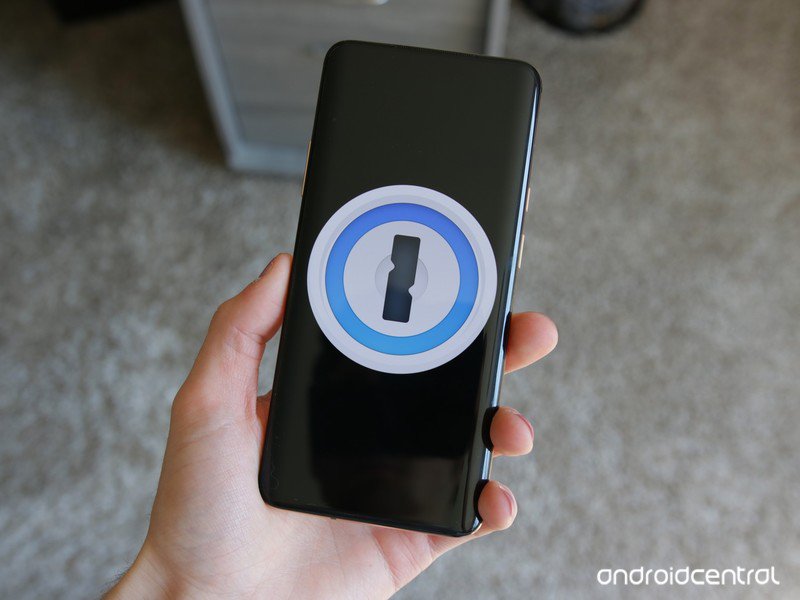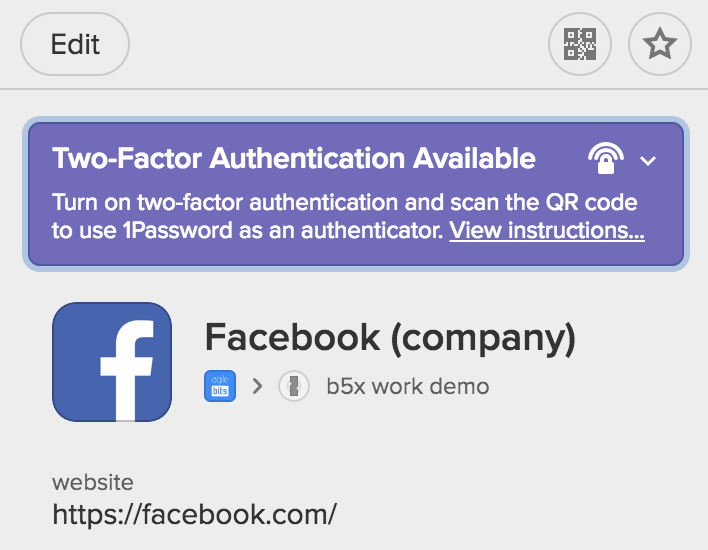- 1password Authy Lastpass Authenticator
- 1password Authenticator App
- 1password Google Authenticator
- 1password Blizzard Authenticator
Scan the QR code with your authenticator app of choice. If you don’t have an authenticator app on your mobile device yet, download one and scan the QR code. We recommend Authy. Once scanned, your authenticator app will return a 6-digit verification code. Enter the code in the dialog box in your Web Vault and select the Enable button. Mar 15, 2020 QR codes are supported through apps like LastPass Authenticator and Google Authenticator. The code is time-based, changing every 30 seconds. 1Password has similar support through apps like. Own your Digital Identity by securely storing Passwords and 2FA offline, across your devices. Available on Mac, PC, Linux, iOS and Android.
To manage your Watchtower settings, choose 1Password > Preferences > Watchtower.
🐞 The 1Password beta is for adventurous folks who enjoy living on the cutting edge. Be the first to get the latest features. This extension requires a 1Password membership. 1Password is one in every of our favourite password managers for a excellent reason why. It has very good options, corresponding to the power to generate one-time passwords that you’ll temporarily input when logging in in your on-line accounts. Sure, 1Password can retailer your passwords and be your default authenticator app, too.
To get alerted when a website you have an account for is added to Watchtower, choose 1Password > Preferences > Notifications and turn on Watchtower Alerts. Learn more about notifications.
To find other items that need your attention, expand the Watchtower section in the sidebar, then click any category with an item count.
If any of your items require action, you’ll see an alert banner at the top of the item while using Watchtower. Items that appear under Compromised Websites, Vulnerable Passwords, or Expiring will show an alert banner throughout 1Password.
Set up and use Watchtower
Before you can use Watchtower, you’ll need to turn it on:
- Open and unlock 1Password.
- Tap Settings > Security.
- Turn on Watchtower.
You’ll see a Vulnerability Alert banner at the top of items that need your attention. Items with a compromised website will also appear in the category list.
To read more about the issue, tap the banner, then tap Learn More.

To get alerted when a website you have an account for is added to Watchtower, tap Settings > Notifications and turn on Watchtower Alerts.Learn more about notifications.
To manage your Watchtower settings, choose 1Password > Settings > Watchtower.

To get alerted when a website you have an account for is added to Watchtower, choose 1Password > Settings > Notifications and turn on “Watchtower alerts”. Learn more about notifications.
To find other items that need your attention, expand the Watchtower section in the sidebar, then click any category with an item count.
If any of your items require action, you’ll see an alert banner at the top of the item while using Watchtower. Items that appear under Compromised Logins, Vulnerable Passwords, or Expiring will show an alert banner throughout 1Password.
Set up and use Watchtower
Watchtower is turned on by default. Before you can check for vulnerable passwords, you’ll need to turn it on.
To adjust your settings:
- Open and unlock 1Password.
- Tap Settings > Watchtower.
You’ll see an alert banner at the top of items that need your attention. Items with a compromised website will also appear in the category list.
To get alerted when a website you have an account for is added to Watchtower, tap Settings > Notifications and turn on “Watchtower alerts”. Learn more about notifications.

Two-factor authentication is an extra layer of protection for your 1Password account. When turned on, a second factor will be required to sign in to your account on a new device, in addition to your Master Password and Secret Key.
Learn more about authentication and encryption in the 1Password security model.
Get an authenticator app
Before you can use two-factor authentication with your 1Password account, you’ll need to install an authenticator app on your mobile device:
Although 1Password can be used to store one-time passwords for other services where you use two-factor authentication, it’s important to use a different authenticator app to store the authentication codes for your 1Password account. Storing them in 1Password would be like putting the key to a safe inside the safe itself.
Set up two-factor authentication
To turn on two-factor authentication:
- Sign in to your account on 1Password.com.
- Click your name in the top right and choose My Profile.
- Click More Actions > Manage Two-Factor Authentication.
- Click Set Up App. You’ll see a square barcode (QR code).
To save a backup of your two-factor authentication code, write down the 16-character secret next to the QR code and store it somewhere safe, like with your passport and Emergency Kit.
- On your mobile device, open your authenticator app and use it to scan the QR code. After you scan the QR code, you’ll see a six-digit authentication code.
- On 1Password.com, click Next. Enter the six-digit authentication code, then click Confirm.
Your 1Password account is now protected by two-factor authentication. To continue using your account on other devices or to sign in to it on a new device, you’ll need to enter a six-digit authentication code from your authenticator app.
Tip
After you set up two-factor authentication, if you have a U2F security key, like YubiKey or Titan, you can use it as a second factor with your 1Password account.
View and manage authorized devices
To view your authorized devices, sign in to your account on 1Password.com. Then click your name in the top right and choose My Profile.
To manage an authorized device, clicknext to it. You’ll find these options:
- Deauthorize Device: Your account will be removed from the device.
- Require 2FA on Next Sign-in: Your account will remain on the device, but changes you make on other devices won’t appear until you reauthorize using a second factor.
Manage two-factor authentication for your team
With 1Password Business, you can manage two-factor authentication for your team if:
- you’re a team administrator or owner
- you belong to a group that has the “Manage Settings” permission
To manage two-factor authentication for your team, click Security in the sidebar and choose “Two-Factor Authentication”. Then you can:
- Allow security keys in addition to an authenticator app.
- Enforce two-factor authentication for everyone on your team.*
- Use Duo, a third-party option that’s automatically enforced.
- Turn off two-factor authentication completely.
* To enforce two-factor authentication, your Master Password policy must be set to Strong. Your team will need to set up two-factor authentication when they sign up, sign in, or unlock 1Password. Create a team report to see who uses two-factor authentication.
Get help
Two-factor authentication requires a 1Password membership and 1Password 7 or later (or 1Password 6.8 for Mac).
If you lose access to your authenticator app
1password Authy Lastpass Authenticator
If you lose access to your authenticator app, you won’t be able to sign in to 1Password on new devices until you turn off two-factor authentication.
1password Authenticator App
To turn off two-factor authentication, sign in to your account on 1Password.com in an authorized browser or unlock 1Password on an authorized device:
1Password.com
- Click your name in the top right and choose My Profile.
- Click More Actions > Manage Two-Factor Authentication.
- Click Turn Off Two-Factor Authentication, then enter your Master Password.
Mac
Choose 1Password > Preferences > Accounts. Click your account, then click Turn Off Two-Factor Authentication.
1password Google Authenticator
iOS and Android
1password Blizzard Authenticator
Tap Settings > 1Password Accounts. Tap your account, then tap Turn Off Two-Factor Authentication.
Windows
Choose Accounts and select your account, then click “Turn off two-factor authentication”.
If you don’t have access to an authorized browser or device, ask someone to recover your account.
If your team uses Duo
If your team uses Duo, you won’t see the option to turn on two-factor authentication because Duo is already providing multi-factor authentication for everyone on your team.
If 1Password isn’t accepting your authentication codes
Make sure the date and time are set correctly on Mac , iOS , Windows , and Android .
